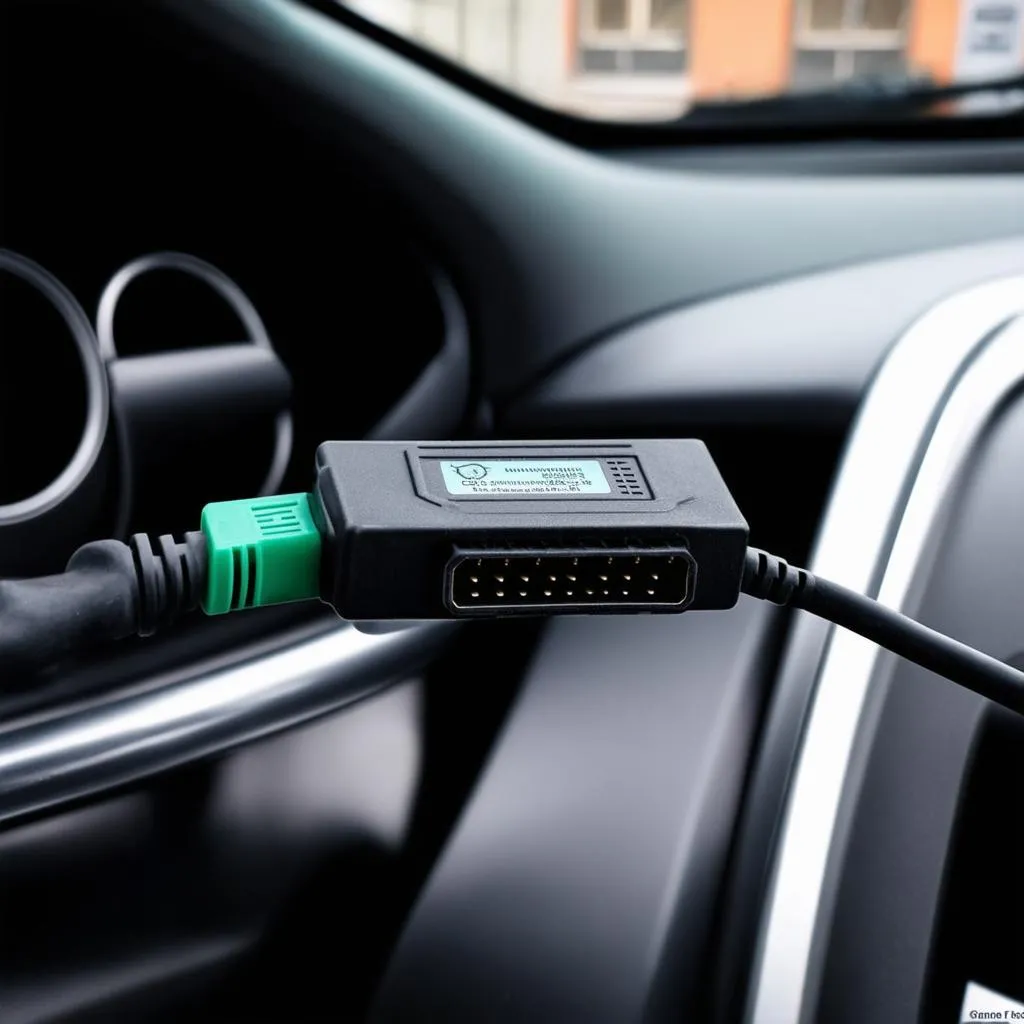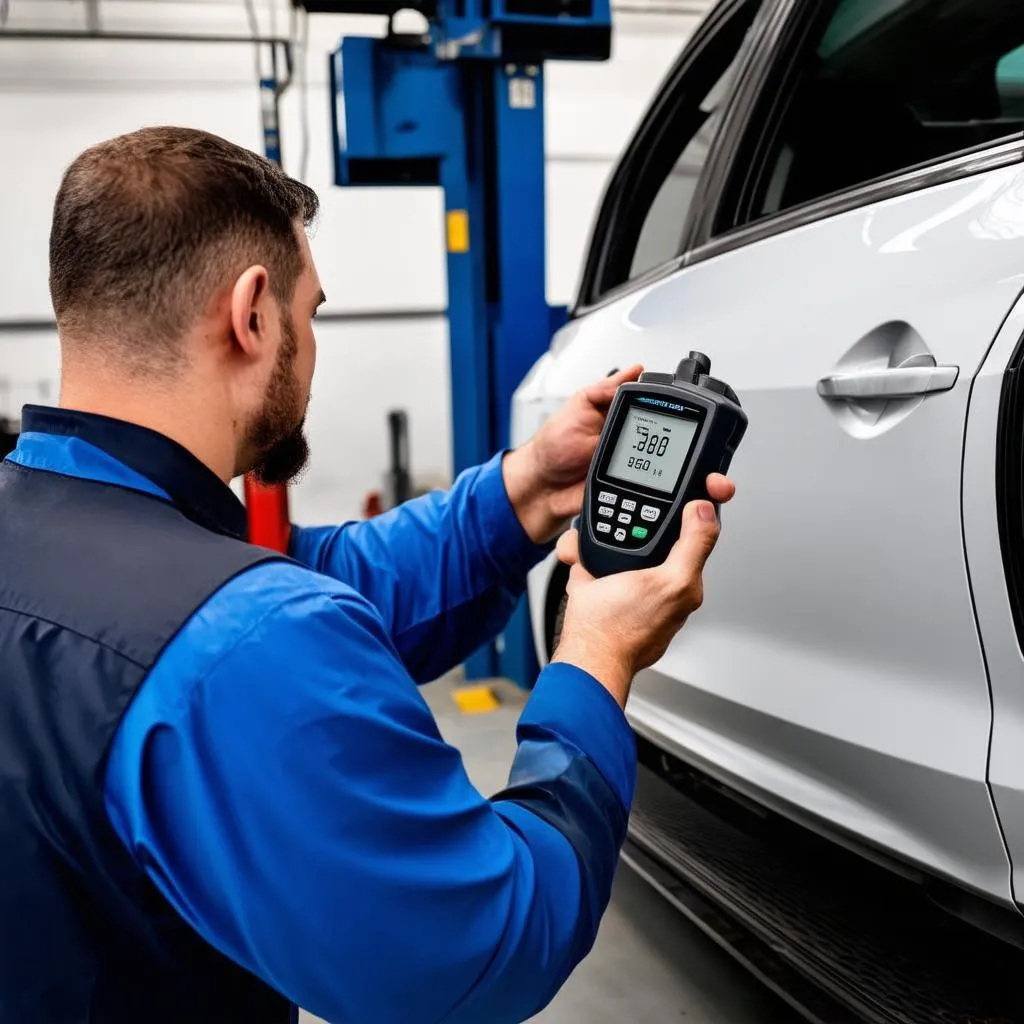Imagine this: you’re driving down the Pacific Coast Highway in your Ford Mustang, the California sun shining down. Suddenly, a yellow light flashes on your dashboard – the dreaded “Check Engine” light. Your heart sinks. What’s wrong? Is it something serious? This is where OBD-II comes in. OBD-II, or On-Board Diagnostics, is a system in your car that acts like its own personal doctor, constantly monitoring its health and letting you know when something needs attention.
Decoding the Mystery: What is OBD-II?
In the world of automotive repair, understanding OBD-II is like having a secret decoder ring. “For technicians, it’s an invaluable tool,” says automotive expert, Dr. Emily Carter, author of “The Complete Guide to Automotive Diagnostics.” “OBD-II gives us a window into the car’s brain, allowing us to pinpoint issues quickly and efficiently.”
Essentially, OBD-II is a standardized system that allows external devices, called OBD-II scanners, to communicate with your car’s computer. Think of it as a universal language that all cars made after 1996 in the United States (and most cars globally) speak. This system monitors various aspects of your engine and emissions control systems, making sure everything is running smoothly.
OBD-II: More Than Just a “Check Engine” Light
While most people associate OBD-II with the dreaded “Check Engine” light, it does so much more than just that. Here are a few ways OBD-II can be helpful:
- Diagnosing problems: OBD-II scanners can read diagnostic trouble codes (DTCs), which are like your car’s error messages. These codes can pinpoint the source of a problem, saving you time and money on unnecessary repairs.
- Monitoring emissions: OBD-II plays a critical role in ensuring your car meets environmental standards. It constantly monitors your car’s emissions system, making sure it’s running cleanly and efficiently.
- Improving performance: Some OBD-II scanners can provide real-time data on your car’s performance, such as speed, RPM, and fuel economy. This information can be used to improve your driving habits or even tune your car for better performance.
 OBD Scanner Connected to a Car
OBD Scanner Connected to a Car
Common Questions About OBD-II
You might be surprised by how many people have questions about this powerful system. Let’s address some of the most frequently asked:
1. Where is the OBD-II port located?
The OBD-II port is usually located under the dashboard on the driver’s side, although its exact location can vary depending on the make and model of your car. If you’re having trouble finding it, consult your owner’s manual.
2. Can I use an OBD-II scanner on any car?
While OBD-II is a standardized system, there can be slight variations between car manufacturers. It’s always best to choose a scanner that is specifically designed for your make and model of car. Check out our articles on OBD-II protocols for specific car manufacturers like Ford OBD-II P0300 or 1998 Nissan Maxima OBD-II Protocol for more information.
3. What do the different OBD-II codes mean?
OBD-II codes are alphanumeric codes that indicate a specific problem with your car. You can find a comprehensive list of OBD-II codes and their meanings online or in a repair manual.
4. Can I fix my car myself using an OBD-II scanner?
While an OBD-II scanner can help you diagnose the problem, it’s important to remember that it’s just a tool. Repairing your car often requires specialized knowledge and skills. If you’re not comfortable working on your own car, it’s best to take it to a qualified mechanic.
 Mechanic Using an OBD Scanner
Mechanic Using an OBD Scanner
Taking Control of Your Car’s Health with OBD-II
Understanding OBD-II empowers you to be a more informed car owner. It gives you a deeper understanding of how your car works and allows you to take a more proactive approach to maintenance. Whether you’re a seasoned DIY mechanic or simply want to avoid costly surprises, investing in an OBD-II scanner can be a wise decision.
Looking for more information on OBD-II or need help choosing the right scanner for your car?
- Explore our articles on specific OBD-II topics like OBD-II Tests and Car HUD Head-Up Displays.
- Consider investing in a high-quality OBD-II scanner, like the ones we recommend on our website.
Still have questions? Don’t hesitate to contact us via WhatsApp at +84767531508. Our team of automotive experts is here to help you 24/7!
Remember, knowledge is power when it comes to car maintenance!